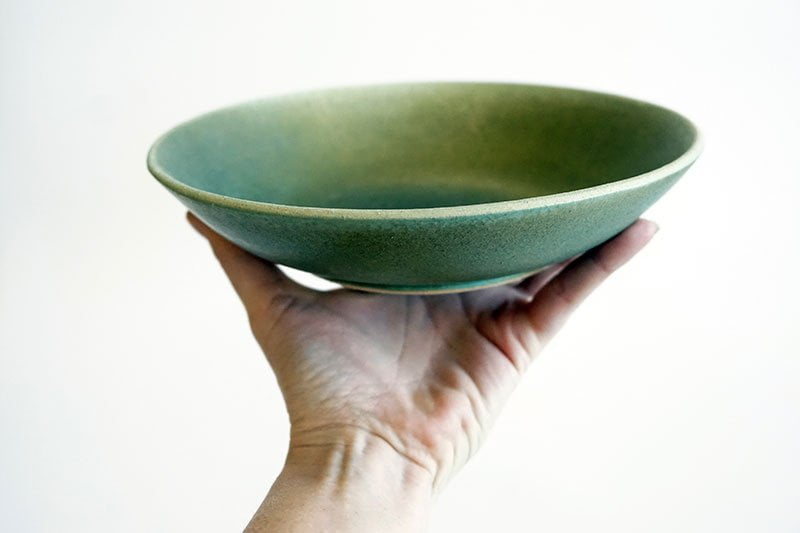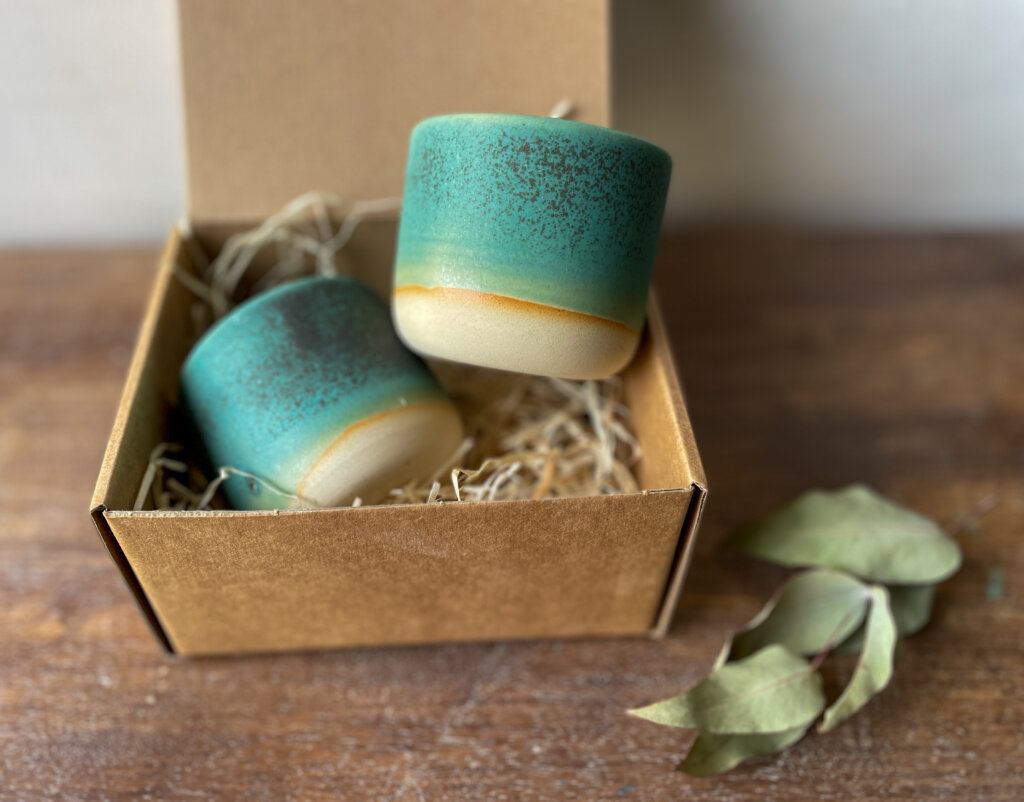Are small marks and mutations from the handmade process considered mistakes? Or are they the essence of what makes handmade pottery special? Let’s take a closer look at why imperfections happen and how they impact the value of pottery.
First, a look at cultural significance
Are you familiar with the concept of perfectly imperfect? It’s a notion that Eastern cultures have been embracing for centuries. For example, Islamic artists make deliberate imperfections in their designs because they believe that nothing is perfect but Allah.
Another widely known tradition from Japan is Wabi-Sabi. “Wabi” refers to the beauty of asymmetry and “sabi” is the beauty of aging and impermanence. Kinsugi is a great example of Wabi Sabi—broken pottery is repaired using gold, silver or platinum—venerating the breakage as part of the history of the piece.
“The essence of wabi-sabi is that true beauty, whether it comes from an object, architecture, or visual art, doesn’t reveal itself until the winds of time have had their say. Beauty is in the cracks, the worn spots, and the imperfect lines.”
—Todd Dominey
This concept is a stark contrast to the lessons learned in modern Western societies, where values of perfection are forced upon us in everything from a person’s physical appearance to the gadgets and decorations in our homes. Perfection is a big lie of course, and thankfully people are realizing that perfect doesn’t mean better. Life is not perfect. Nor should it be. Real beauty lies in the quirks and character.
But in the world of ceramics, this is why many potters have texts that read like warnings to their buyers, telling them that the piece they buy might have blemishes or imperfections. Artists in Western cultures must inform their buyers about the implicit imperfect nature of handmade pottery.
The imperfections tell a story
Handmade pottery is not mass produced in a factory using molds. Each piece is unique and while it might be part of a set or collection made by the artist, the irregular shape or finger marks mean that it’s one-of-a-kind. The imperfections tell the story about how it was made.
Embracing the alchemy
Potters spend years honing their craft, building muscle memory and trying to improve their technique. But for all of the long hours and hard work that’s involved in creating well-made pots, there are always certain elements that remain completely out of our control. Potters must humbly embrace alchemy and learn to accept what is.
Let me give you an example. Even if I throw a “perfect” bowl and dip it in reliable glazes, once the pot goes into the kiln, I have no control over the chemistry that happens inside. Variations in the color occur because of the thickness of the pot, thickness of the glaze applied, variations in the kiln temperature, and the position in the kiln. Even the chemical composition of the glazes on an adjacent pot can change the color of my bowl and vice versa.

And that’s just the coloring… What about the shape? Clay shrinks and moves in the kiln. If there’s any humidity still in the clay, cracks and bubbles can form. The list of ways that character and quirkiness can appear is endless.
The craft of making handmade pottery requires constant recalibration … and yes, a little bit of guesswork and luck. Successful potters must learn to enjoy uncertainty because it’s part of the process.
If you see enough handmade pottery, you’ll realize that all of it has unique variations. Even the pieces at the most prestigious art galleries. So going back to the question at the start of this article—are variations an integral part of the craft? The answer is an emphatic yes! And each piece is more unique (and valuable!) because of it.
If you’re new to the world of pottery and looking to buy some pieces, whether functional or decorative, you may have some questions. I’m creating a new series of blog posts to help new buyers answer a few frequently asked questions. If there’s anything you’d like to know, please tell me about it in the comments below!



